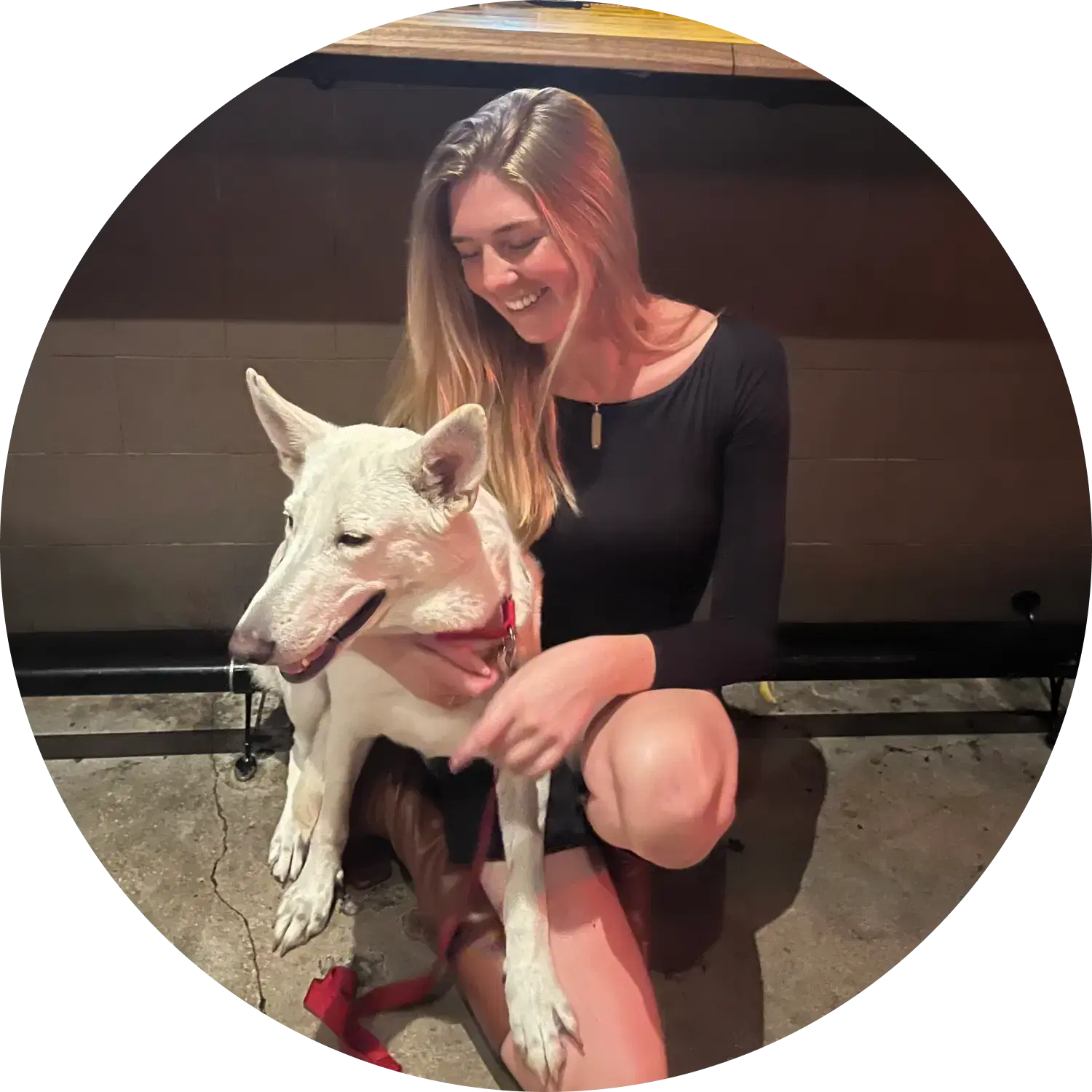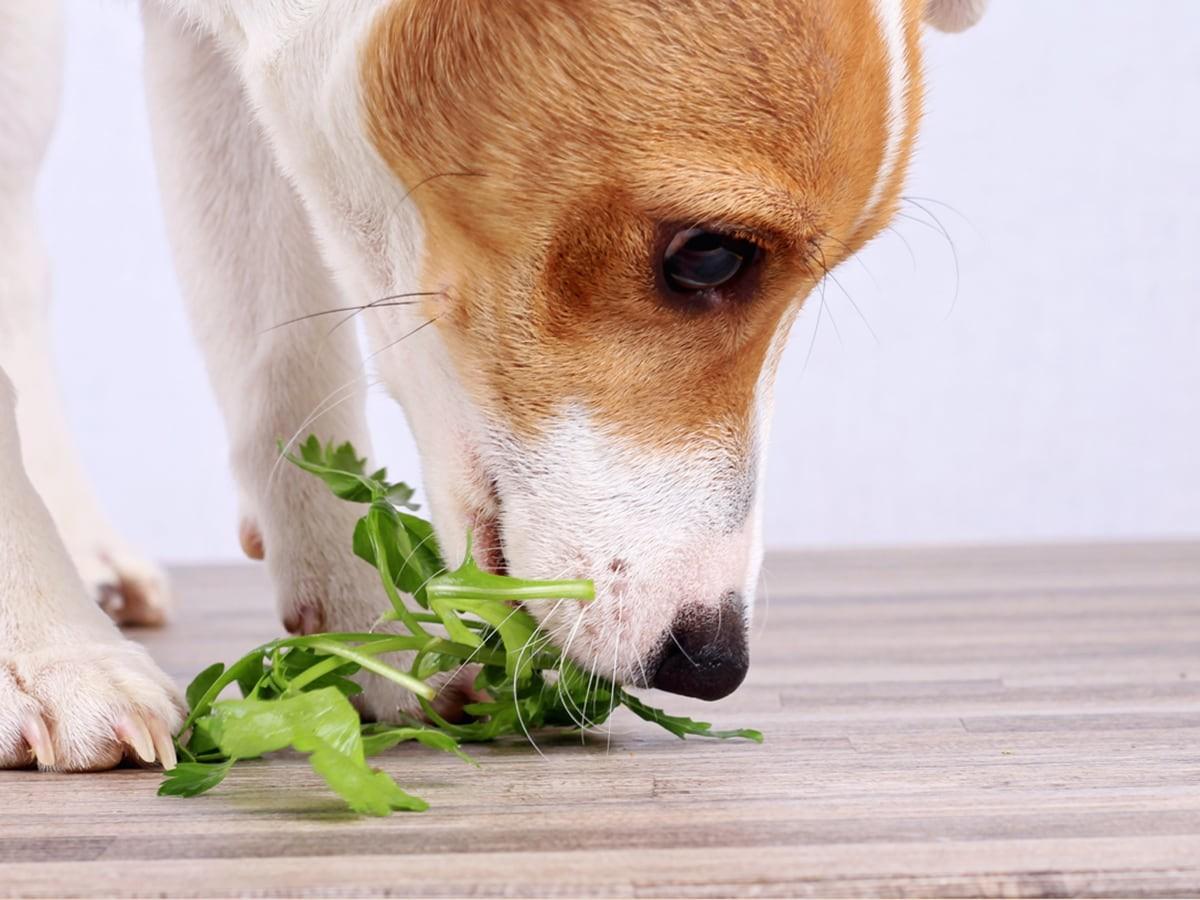Vegetables are just part of a balanced diet for your dog. It is important, however, to know what vegetables are best for your pup. One vegetable of interest to some pet owners is seaweed. But can dogs eat seaweed?
Like some other types of food, your dog can eat seaweed but only in small quantities. It is also important to know that it has been dried and properly handled by an appropriate source. There are potential benefits and downsides to eating seaweed, as well as a number of different types of edible seaweed.
The Benefits of Feeding Your Dog Seaweed
Though it can all depend on the type of seaweed that you feed your dog, there is any number of nutrients that can help keep your dog healthy and fit. Iodine, which can sound scary but is actually great for thyroid hormone production), omega-3 fatty acids, calcium, magnesium, iron, and a litany of different vitamins like Vitamin B12 can all help to keep your dog healthy.
Just do your homework and check to see what nutrients and vitamins are in the seaweed that you choose. Knowing the different types beforehand can give you a better idea of which option is best for you.
The Hazards of Feeding Your Dog Seaweed
Though seaweed can be quite beneficial for both humans and dogs alike, there are some things to be concerned about. Instead of asking, “can dogs eat seaweed” focus instead on the things that you should be avoiding. Here are three things, in particular, to keep in mind.
Only Small Quantities
Both nori and kelp actually have trace amounts of mercury and arsenic. Do a cursory search, and you will see that they are not good chemicals to be ingesting. For that reason, you need to keep the quantities of seaweed that you feed your dog to a minimum.
Seaweed supplements are another thing to watch for. Even if they are good for humans, they may not necessarily be good for your dog.
No Wild Seaweed
There are some who might find seaweed on the beach and think that it is perfectly fine for their dog to eat. What those people don’t realize is that seaweed will shrink in the sun and can actually expand again when it reaches your dog’s digestive system, resulting in a blockage.
There are also other sea life and pollutants that could potentially be harmful to your dog. Salt poisoning is another major risk as well. If you notice that your dog has gobbled up seaweed found on the beach, talk to your vet sooner rather than later.
Go Unseasoned
You will find that there is a number of seaweed snacks that have seasonings like onion and garlic. Those can be potentially toxic for your dog, so try to avoid any type of seaweed or seaweed snack with seasoning.
Finding powdered, unseasoned seaweed is the safest bet if you are looking for a supplement for your dog. If you are adding small amounts of seaweed to your dog’s meal, don’t provide any seasonings or additives.
Different Types of Edible Seaweed
If you have been looking into seaweed for your dogs, it can get confusing quickly. The reason is that there are a plethora of different seaweed types to choose from. Knowing which edible seaweed types work best for your dog is important. Here are a few in particular that are worth considering.
Nori
Nori is notable because it has a unique color. With a purple-red hue, it stands out from the other types. Of course, when it is dried, it does have a dark green that is more familiar with seaweed. Generally speaking, nori gets roasted before it is pressed into dried sheets.
If the name sounds familiar, that is because it is the most popular type of seaweed in the western part of the world. There is a great chance that you have eaten at a Japanese restaurant that uses nori for its sushi rolls. The dried sheets are great as a moderate snack option and come in unseasoned and lightly salted.
Kombu
Kombu is notable because it is one of the key components in dashi, which is a broth. It is a type of kelp that comes in long strips and packs a lot of flavor. Kombu is not only used in dashi but in dried anchovies as well.
You can use kombu as a way to provide moisture for dry dog food. Just make sure that you stay away from another dashi ingredient – dried shiitake mushrooms – because they can be potentially toxic to your dog.
Dulse
Dulse has a reddish hue to it, and it tends to come from the northern parts of the Atlantic and Pacific oceans, where the water is colder. Dulse tends to be harvested right off the rocks, especially in Iceland and Scotland.
Dulse is known for having a little bit of a leathery texture, though it is still quite soft. You can find dulse in powder, shredded, or dry flake form. It can be added as a supplement to your dog’s meal to give them the aforementioned health benefits.
Wakame
This one can seem confusing because it is mostly used in habitats of marine life that live in shallow waters. That said, it can be made into edible seaweed. Known as sea mustard, it is dark green in color and can be most commonly found in miso soup.
Wakame has a sweeter taste than some of the others on the list while providing a texture that is silky to the touch. Wakame is a great option if you want to add omega-3 fatty acids to your dog’s diet.
The Best Way to Give Your Dog Seaweed
Before you add something new to your dog’s diet, talk to your vet first. The last thing you want to do is make a change only to see it have major health implications for your dog. Should they give you the green light, there are a few options worth considering.
Sheets are a popular option. They can be crumbled into your dog’s food or provided as snacks since they have little or no seasonings involved. All you do is sprinkle a small amount into their food. A teaspoon or so should be plenty.
After you have started implementing seaweed into their diet, keep an eye on them. Watch their behavior, stool, and energy levels. There is a chance that they may have an allergic reaction or some kind of adverse reaction to the seaweed.
What Else Can Your Dog Eat?
Our furry friends are notorious for eating whatever they want, whenever they want. Unfortunately for them, they don’t know when they’re getting into something potentially dangerous, and sometimes neither do we. It helps to know which foods are toxic to our dogs so we can understand when they could be in trouble. Sometimes the treat we enjoy is just as beneficial to our dogs. Here are some healthy snack choices that you can securely and moderately incorporate into their diet.
Seafood Your Dog Can Eat
Dogs can safely consume seafood. If they eat shellfish like lobster or crab, their shells, legs, and tails should be removed to avoid the possibility of puncturing their internal organs. Dogs can also eat fin fish, like salmon, shrimp, and some tuna (in moderation) if their bones are removed for the same reason. Your dog might benefit from staying away from canned tuna if it comes in a package filled with salt water or contains any extra salt. Likewise, seafood given to dogs should not be seasoned at all.
Seafood can have bacteria and other toxic elements in it when they’re undercooked. Because of this, seafood should always be thoroughly cleaned and cooked before it’s offered to your dog.
Fruits Your Dog Can Eat
Several fruits are healthy favorites for dogs and provide a nutritional treat and supplement in their diet. For example, dogs love bananas. Bananas are a great source of potassium and vitamins. Dogs can have many kinds of melons, like watermelon, plus kiwis, oranges, apples (without the core, seeds, or stems), pineapples, and mangos. Fruits that are packed with antioxidants like blueberries, strawberries, and raspberries are very healthy for dogs when they’re offered in chunks and thoroughly cleaned.
Grapes, raisins, and sultanas are poisonous to your dog and shouldn’t be eaten at all. Cherries and other fruits with pits, like peaches, plums, and the like, are not considered safe either. The flesh of the fruits is safe to eat, but pits are hazards and poisonous. You should always take the pits out of fruits before giving them to them. Here is a full list of fruits your dog can eat.
Vegetables Your Dog Can Eat
Eating onions, leeks, and garlic could be lethal for your dog. Seasonings that contain these ingredients could be just as deadly, which is why it’s a good idea to avoid them. There are some other veggies that you can feed your dog during safe snack time. Dogs can have carrots, spinach, green beans, and pumpkin safely. Furthermore, they can eat kale, broccoli, and brussels sprouts, and they are all completely safe and actually very healthy for them. Sometimes too many veggies can cause gas, so pay attention to how much vegetables can dogs eat in one sitting.
Beans Your Dog Can Eat
Beans are packed with important nutrients for a dog’s diet. Dogs can have lima beans, black beans, garbanzo, pinto, kidney, soy, and butter beans, too. Feeding your dog too many beans could cause them to have gas. To avoid an upset stomach, only give them beans in moderation.
Nuts Your Dog Can Eat
Some nuts should be completely avoided, like macadamia nuts and walnuts. These are very poisonous to dogs. Fiber and potassium may be the only nutritional benefits of nuts, and there are many other safer ways for dogs to receive these nutrients. However, If they’re begging for a treat, they can eat pistachios and peanuts in moderation without posing a threat. Nuts should never be seasoned or shelled. Here is a full list of all the dry fruits your dog can eat.
Final Thoughts
If you have thought of implementing seaweed into your dog’s diet, you absolutely can. Just make sure that you use small quantities from a reliable source. It may take some time to figure out what type of seaweed your dog likes best, so it is worth trying a few different kinds.
What different vegetables can your dog eat? If you want to stay green, there are plenty of options. Celery, cucumber, spinach, kale, broccoli, and green beans are all great alternatives to seaweed. Carrots, beets, sweet potato, and cauliflower are also quite beneficial for your pup as well.

The resident animal enthusiast at Spot. I have a lifetime of pet parent experience. If it has fur, feathers, or scales, I’ve probably shared my home with it. I aim to be a reliable source, blending experience with a dedication to the well-being of pets.
Patterdale, Sassafras. "Can Dogs Eat Seaweed?" American Kennel Club, 04 Mar. 2025, https://www.akc.org/expert-advice/nutrition/can-dogs-eat-seaweed/.
Helton, Brooke. "Can Dogs Eat Seaweed?" The Dog People by Rover, 21 May 2024, https://www.akc.org/expert-advice/nutrition/can-dogs-eat-seaweed/.
AKC Staff. "Fruits and Vegetables Dogs Can or Can't Eat." American Kennel Club, 15 Oct. 2025, https://www.akc.org/expert-advice/nutrition/fruits-vegetables-dogs-can-and-cant-eat/.
Turner, Beth. "Safe and Unsafe Nuts and Seeds For Dogs & Cats." Preventive Vet, 09 Sep. 2025, https://www.preventivevet.com/pets/safe-and-unsafe-nuts-and-seeds-for-pets.
The information presented in this article is for educational and informational purposes only and does not constitute or substitute for the advice of your veterinarian.












